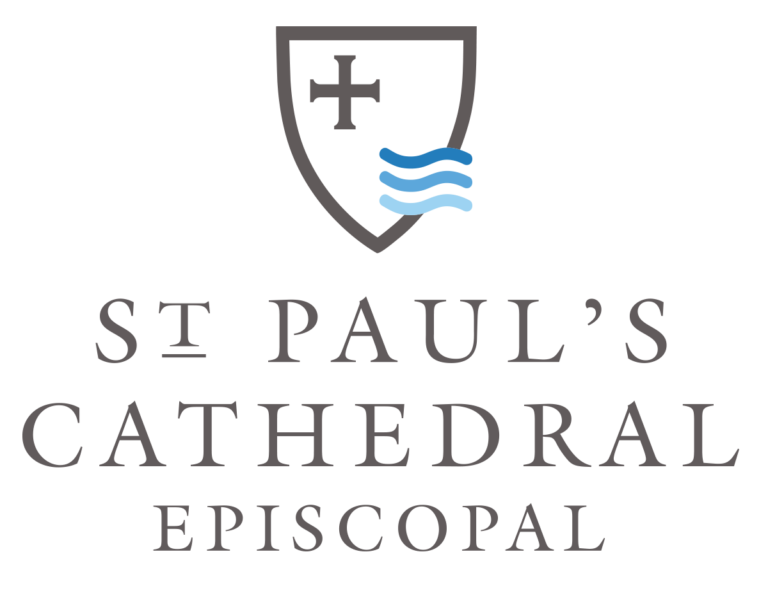Hello St. Paul’s,
This week we observed what some call the Triduum of the Dead, or All Hallowtide. Triduum is a term meaning three days, which is traditionally used for the three days connecting Lent to Easter, beginning with worship on Maundy Thursday and ending at sunset on Easter Day. You may recall that liturgical time runs from sunset to sunset – in the Genesis creation story we are told, “It was evening and it was morning, the first day”. So the Easter Triduum begins on Thursday evening.
At this time of year, we have a Triduum, of All Hallows Eve, or Halloween, then All Saints Day, and then All Souls Day, or the Commemoration of the Faithful Departed: October 31, November 1, and November 2. The season has its roots among the ancient Celts of the British Isles. In the USA, and especially in the areas with large Hispanic-Latino populations, this season has taken on additional meaning, as we have adopted the Mexican tradition of el Día de los Muertos, a cultural celebration focused on these days. There are multiple layers to this season, so let’s unwrap them.
The connecting thread between all the celebrations is the mystery of death and the eternal struggle of human beings to come to terms with that ultimate reality. In northern Europe the days grow very short as the winter solstice approaches. In a pre-industrial world, it was easy to imagine ghosts and monsters out there in the long dark nights. The Celtic pagan festival of Samhain in early November was a time when people believed the ghosts of the dead came back to visit the living; people lit bonfires on hilltops to scare away the spirits and wore disguises to avoid being recognized by any ghosts that were close by. There was a sense that creatures of evil, such as hobgoblins and witches, were lurking nearby to play tricks on people or snatch the wandering souls away. When I was a child in Northern Ireland we celebrated Halloween by lighting bonfires and letting off fireworks. In the US, Halloween has become a totally secular holiday, but the costumes and the tricks, as well as the name, are echoes of its origins.
In the 7th century the feast of All Saints was founded, the first church-wide celebration of martyrs and saints of the Christian church. It was soon established on November 1, to Christianize the pagan holiday (Christmas was set on December 25 for similar reasons). All Saints is a major feast, so important that we are allowed to celebrate it on the Sunday following November 1, usually a privilege reserved for a church’s patron saint. It is one of the five occasions in the church year when Baptism is especially appropriate, and we will have two baptisms on Sunday.
All Souls Day, or the Commemoration of the Faithful Departed, on November 2, started out as the day after All Saints, to remember those who had died but whose souls remained in purgatory, as opposed to the saints whose souls were safely in heaven. It has evolved into a day for remembering those we have loved and lost who aren’t acclaimed as saints in the wider church. It isn’t a major feast, but many churches celebrate it, especially those named All Souls. There’s a great deal of confusion between All Saints and All Souls, which isn’t helped by our habit of transferring BOTH feasts to the Sunday following and including the reading of parishioners who have died in the past year in the combined celebration.
The final layer of this is our celebration of el Día de los Muertos, or the Day of the Dead, which coincides with All Souls Day. This is a holiday celebrated especially in Mexico, when families gather at cemeteries to welcome back the souls of their loved ones for a brief reunion. They decorate the graves and bring food and drink that the deceased loved ones enjoyed. It is a joyful time of sharing memories and, like Halloween, has a mixed origin involving pre-European pagan customs. Marigolds or sempasuchiles are an important part of the decoration, and marigold petals are used to create pathways for the dead to follow back to their families. Many people construct temporary altars or ofrendas in churches and homes where they place photographs, favorite food and drinks, and other adornments.
So our Triduum of the Dead is a time to remember and celebrate, and it brings together several threads of tradition, from Ireland to Rome to Central America, as we seek to be an ever expanding multicultural faith community. I look forward to seeing you on All Saints Sunday!
Your sister in Christ,
Penny


A timely message, Penny, thank you!
Thank you so much for this information. I knew little about this celebration (except for el Dia de los Muertos). Nice to learn something new!
Informative. An effective sorting out
of what was a 3 day jumble in my
mind. Thank you.
Superb…and lovely!!!